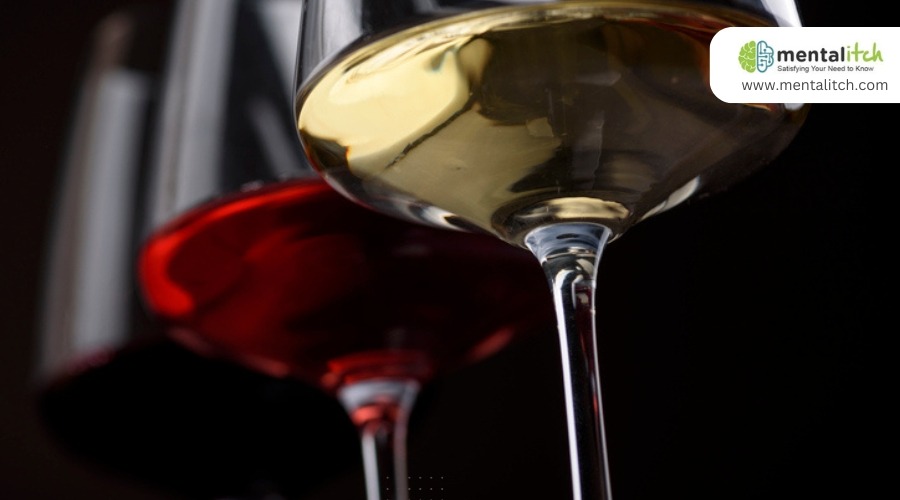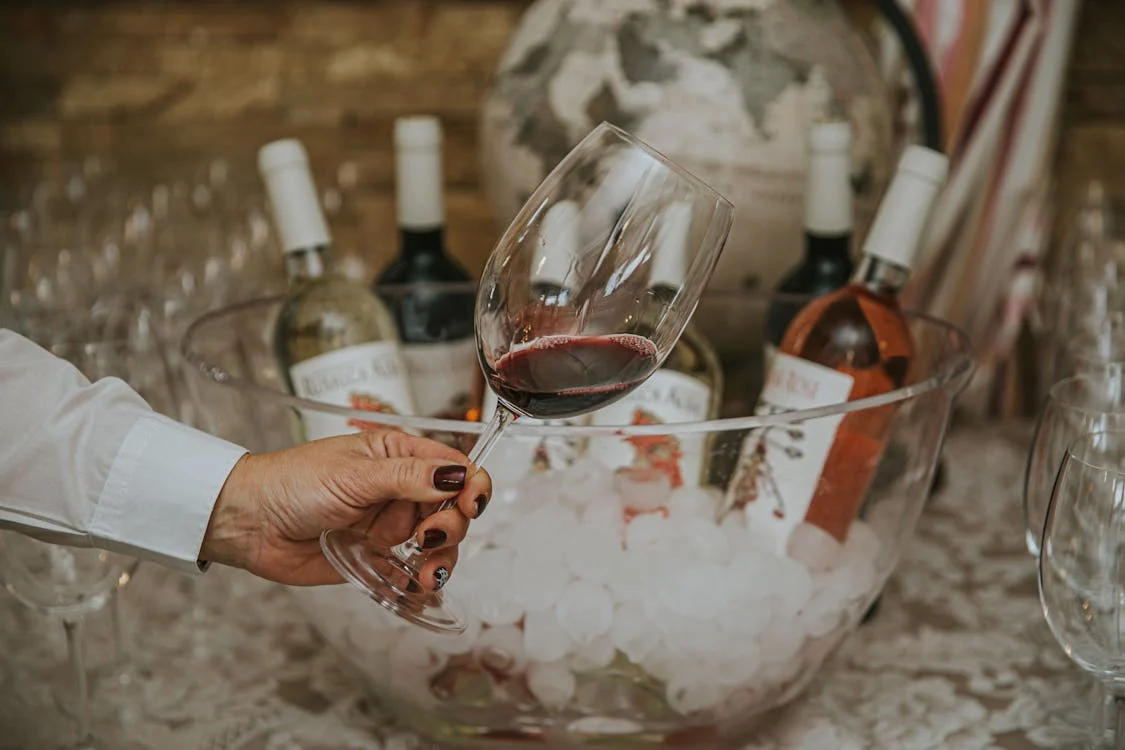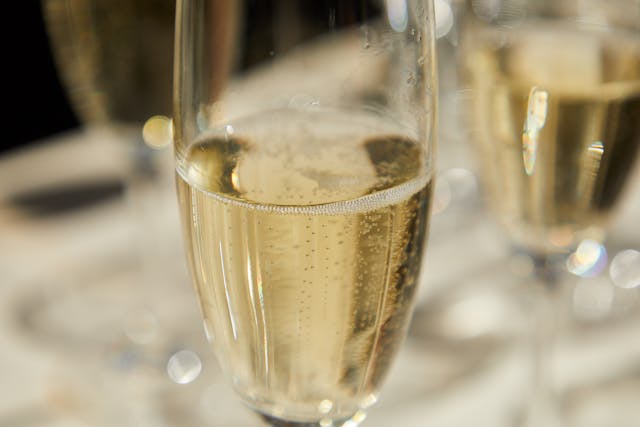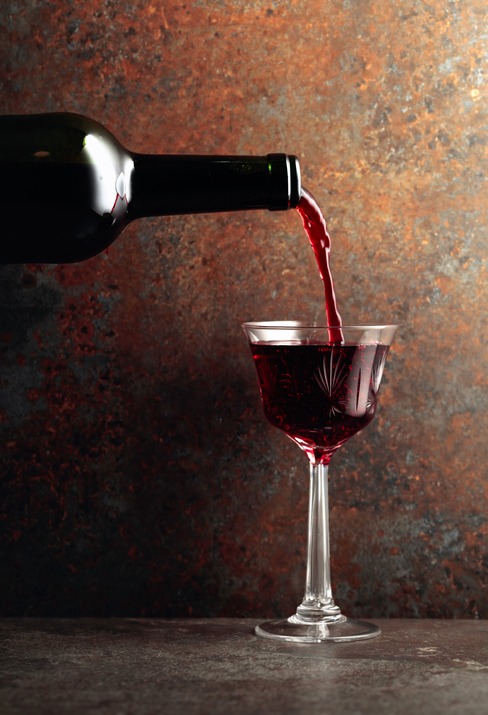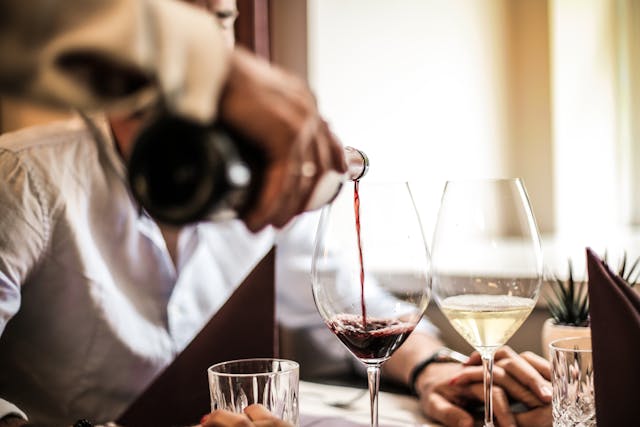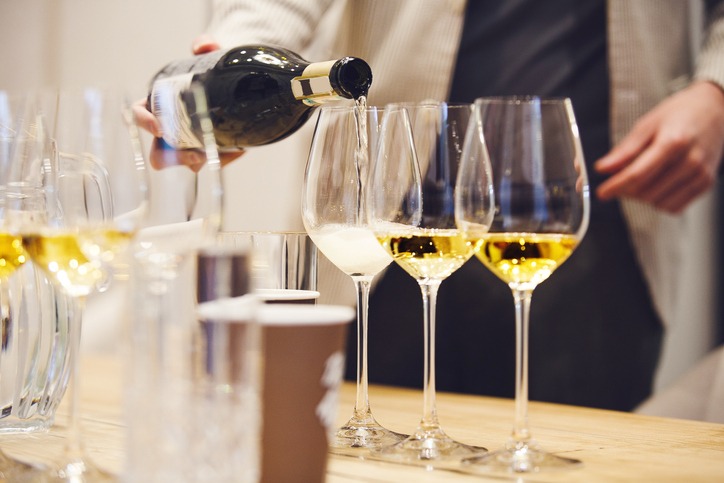Fortified wine and sparkling wine are two distinct categories with unique characteristics that cater to varied palates and occasions. Fortified wine is distinguished by the addition of a distilled spirit, typically brandy, during its production process. This not only enhances its alcohol content but also contributes to its rich flavors and extended shelf life. Fortified wines include well-known varieties such as Port, Sherry, Madeira, and Marsala, each with its own specific production methods and tasting profiles.
Sparkling wine, meanwhile, is celebrated for its effervescence, which is a result of carbon dioxide that gets trapped in the wine during fermentation. This can be achieved either through natural fermentation in the bottle, a method known as the traditional method, or by injecting carbon dioxide directly into the wine. Sparkling wines are produced in various regions around the world, with Champagne being the most recognized due to its specific regional production rules.
Understanding the nuanced production techniques and resultant flavor profiles of fortified and sparkling wines can enhance the tasting experience. Fortified wines offer warmth and complexity, suitable for sipping and savoring, often enjoyed as an aperitif or with dessert. In contrast, sparkling wines are known for their light, refreshing qualities, making them popular choices for celebrations and as an accompaniment to a wide range of dishes.
Defining Wine Types
Within the wide array of wines available, fortified and sparkling wines stand out for their unique production processes and attributes. Each brings its own flavors and characteristics to the table, largely defined by their distinct wine-making techniques.
What Is Fortified Wine?
Fortified wine is a type of wine that has had a distilled spirit, typically brandy, added to it. This process increases the alcohol content and halts fermentation, allowing for a range of sweet to dry styles. Originating as a way to preserve wine, the alcohol addition typically occurs during or after fermentation, resulting in a beverage that is more alcoholic and often sweeter than regular wines. Fortified wines include varieties like Port, Sherry, Madeira, and Marsala, each with a unique flavor profile and set of regulations for its production.
- Common characteristics:
- Higher alcohol content (between 15-22%)
- Addition of a distilled spirit
- Potential for aging in wood casks
- Variety in flavor from dry to sweet
What Is Sparkling Wine?
Sparkling wine is characterized by its significant levels of carbon dioxide, which leads to the effervescence that it is famous for. This effervescence is a result of natural fermentation, either in the bottle as with the traditional method used for Champagne, or in large tanks for less expensive versions. The base of sparkling wine is fermented grape juice, and the secondary fermentation, which creates the bubbles, distinguishes it from still wines. Examples include Champagne, Prosecco, and Cava, each deriving their bubbles and zest from the careful fermentation process.
- Key points about sparkling wine:
- Contains carbon dioxide-induced effervescence
- Secondary fermentation creates the bubbles
- Can range from sweet to dry
- Production methods include the Traditional and Tank methods
Production Processes
In the world of wine, the differences in production processes for fortified wine and sparkling wine define their unique characteristics. Fortification involves the addition of spirits, while carbonation requires careful management of carbon dioxide.
Fortification of Wine
Fortified wine sees the introduction of distilled spirits, typically brandy, to halt fermentation by killing the yeastwith high alcohol content. This fortification process occurs in two stages:
- Initial Fermentation: The wine undergoes partial fermentation until it reaches a desired sweetness level.
- Addition of Brandy: Spirits are added, elevating the alcohol content to between 17% and 20%, ending fermentation prematurely and retaining some of the grape’s natural sugars.
Fortified wines often undergo aging following fortification. Distinct aging methods like the solera system or estufagem impart additional flavors and characteristics unique to each type. Examples include Port, Sherry, and Madeira.
Creating Sparkle: The Carbonation Process
Sparkling wine is defined by its effervescence, achieved through intricate carbonation processes. The traditional method, used in Champagne production, involves:
- Secondary Fermentation: Wine undergoes a second fermentation in the bottle, where added sugar and yeast produce carbon dioxide.
- Aging on Lees: The wine rests on the dead yeast cells, called lees, which contribute to the flavor and texture.
- Riddling: Bottles are gradually tilted and rotated to collect yeast in the neck.
- Disgorgement: The neck is frozen, and the yeast plug is expelled.
- Dosage: A mixture of wine and sugar, called dosage, balances the final product’s acidity.
Prosecco, conversely, uses the Tank Method, in which secondary fermentation happens in pressurized tanks, making the process quicker and less labor-intensive than the traditional method. Both techniques aim to infuse the wine with carbon dioxide to create the signature bubbles.
Characteristics and Attributes
In this section, the distinct characteristics and attributes of fortified and sparkling wines are elucidated, focusing on their flavor profiles, sweetness and body, as well as color and aroma.
Flavor Profiles
Fortified wines such as Sherry, Port, and Pedro Ximénez are known for their rich and complex flavor profiles. They often exhibit notes of dried fruits, nuts, and spices. For example:
- Tawny Port: It has a nutty and caramel-like flavor.
- Ruby Port: Exhibits fresh and vibrant red fruit flavors.
- Moscatel: Often infused with citrus and floral notes.
- Manzanilla and Amontillado: They possess pronounced nutty and saline characteristics.
In contrast, sparkling wines like Champagne, which typically comprises a blend of Chardonnay, Pinot Noir, and Pinot Meunier, offer a spectrum of flavors that range from crisp apple and pear to richer notes of toasted brioche, depending on the production method and aging.
Sweetness and Body
The residual sugar in wines determines their sweetness level, from dry wines with very little sugar, to sweetwines with high levels of residual sugar. Here’s how both wine types align:
| Wine Type | Sweetness | Body |
|---|---|---|
| Fortified Wine | Can range from dry to very sweet | Generally full-bodied |
| Sparkling Wine | Styles vary from brut (dry) to doux (sweet) | Body can range from light to medium-full |
Fortified wines like Sherry can range from dry (Manzanilla) to very sweet (Pedro Ximénez), while sparkling wines are classified into categories like Brut (dry) to Doux (sweet), often indicated on the label.
Color and Aroma
Color in wine is typically a reflection of grape variety and winemaking practices.
- Fortified wines:
- Tawny Port: Amber-brown due to extended barrel aging.
- Ruby Port: Deep red color, signifying minimal aging.
- Sparkling wines:
- Chardonnay-based: Pale gold color.
- Pinot Noir/Meunier-based: Can add a pinkish hue to rosé versions.
The aroma of fortified wines can include scents of walnut, almond, fig, and toffee, while sparkling wines might present aromas of green apple, pear, citrus, and at times, bready notes from the yeasts used in the fermentation process. These scents are influenced by grape varieties like Riesling or Gewürztraminer, each contributing their own distinct floral and spice aromas to the profile.
Common Varieties and Styles
In exploring fortified and sparkling wines, one encounters a rich tapestry of flavors and production methods. Each wine style boasts distinct characteristics influenced by the region, grape varietals, and production techniques involved.
Varieties of Fortified Wines
Fortified wines have a higher alcohol content, typically created by the addition of a grape spirit. Here are some common varieties:
- Sherry: Originating from Jerez de la Frontera in Spain, it includes types like Fino and Manzanilla, enjoyed as an aperitif, and richer styles such as Amontillado and Oloroso.
- Port: A sweet, often dessert wine from the Douro Valley in Portugal. Varieties include:
- Ruby Port: Fresh, fruity profile, stored in stainless steel or concrete tanks to prevent oxidative aging.
- Tawny Port: Aged in wooden barrels, exhibiting nuttier, more complex flavors.
- Vintage Port: Made from the best grapes in top years, capable of aging for decades.
- Madeira: Named after the Portuguese island, with styles ranging from dry to sweet, and notable for its unique heating process during production. Varieties such as Sercial and Verdelho lean dry, while Bual and Malvasia are sweeter and richer.
- Marsala: A Sicilian wine used both in cooking and as a sipper, found in dry and sweet versions.
- Vermouth: An aromatized wine, infused with various botanicals, and a key ingredient in many classic cocktails.
Popular Sparkling Wine Styles
The effervescence in sparkling wines comes from carbon dioxide, which forms naturally or is added during fermentation. Popular styles include:
- Champagne: Produced in the Champagne region of France using traditional methods and primarily Chardonnay, Pinot Noir, and Pinot Meunier grapes.
- Prosecco: Italy’s famous sparkling wine, made primarily from Glera grapes near the Veneto region, known for its lighter, fruitier profile.
- Cava: Spain’s answer to Champagne, made using a similar traditional method, with local grape varietals like Macabeo, Parellada, and Xarel·lo.
- American Sparkling Wine: Made in various regions across the U.S., often utilizing the same grapes and methods as Champagne.
- Sekt: The term for quality sparkling wine in Germany and Austria, typically made from Riesling, Pinot Blanc, and Pinot Gris grapes.
Each of these sparkling wines may range from very dry (Brut Nature) to sweet (Doux) depending on the dosage – a mixture of wine and sugar added after the second fermentation.
Pairing and Serving Recommendations
Selecting the right pairing for wine not only enhances the dining experience but also allows the wine’s characteristics to fully emerge. The following outlines specific recommendations for both fortified and sparkling wines.
Complementing Food with Wine
Fortified Wine
Fortified wines, due to their higher alcohol content and rich flavors, pair excellently with robust and savory dishes. For instance:
- Port: Pairs well with blue cheeses, nuts, and chocolate-based desserts.
- Sherry: Works beautifully as an aperitif with olives and as a digestif with savory pies.
- Madeira: Complements rich stews and can be served with dessert—especially those involving caramel and nuts.
Sparkling Wine
Sparkling wines, on the other hand, are renowned for their acidity and effervescence, making them versatile for pairing:
- Champagne: Best served with oysters, caviar, or light pastries.
- Prosecco: Accompanies cured meats or shellfish superbly.
- Sémillon and Riesling: These sweeter sparkling wines match delightfully with spicy foods or fruity desserts.
Serving Temperatures and Glassware
Fortified Wine
Fortified wines should be served at temperatures that best reveal their bouquets:
- Sweet dessert wines: Serve between 55-60°F (13-16°C).
- Dry varieties: Serve slightly cooler, around 45-50°F (7-10°C).
Glassware for these wines is typically smaller, as they are sipped and enjoyed gradually.
Sparkling Wine
Temperature and glassware are paramount when serving sparkling wines to preserve their effervescence:
- Champagne: Ideal at 45-48°F (7-9°C) in a tall flute that showcases its bubbles.
- Prosecco: Serve slightly warmer at 46-50°F (8-10°C), also in a flute or sometimes a tulip-shaped glass to capture its aroma.
| Wine Type | Temperature | Glass Type |
|---|---|---|
| Champagne | 45-48°F | Flute |
| Prosecco | 46-50°F | Flute/Tulip |
| Sweet Fortified Wine | 55-60°F | Small Glass |
| Dry Fortified Wine | 45-50°F | Small Glass |
Utilizing the proper temperature and glassware maximizes the tasting experience by highlighting the distinct flavors and maintaining the integrity of the wine’s profile.
Cultural and Historical Context
Fortified and sparkling wines hold distinct places in the cultural and historical tapestry of wine, reflecting their unique origins and impact on culinary traditions and social customs.
Historic Wine Regions
Fortified Wines: The Douro Valley in Portugal and Jerez de la Frontera in Spain are pivotal to the history of fortified wines. Port wine, heralded from the Douro Valley, is a rich, typically sweet red wine often served as a digestif. Jerez de la Frontera is the birthplace of Sherry, a range of fortified wines from dry to sweet, notably including Moscatel and Pedro Ximénez, which are often paired with or added to cocktails, spices, or herbs.
Sparkling Wines: The production of sparkling wine is deeply rooted in regions like Champagne, France. Unlike its fortified counterparts, sparkling wine is renowned for its celebratory role and is often served as an aperitif. The effervescence is a result of carbonation from a second fermentation process, which can occur in the bottle or a large tank.
Culinary and Social Role
Fortified Wines: With a higher alcohol content and rich flavors due to the addition of spirits like brandy, fortified wines such as Port, Sherry, and others, serve as the foundation for many classic cocktails, including the Negroni, Martini, and Manhattan. They are traditionally consumed before or after a meal, enhancing the dining experience with their complex flavors.
Sparkling Wines: On the other hand, sparkling wines, with their varied sweetness levels and the notable presence of resveratrol, a compound in grapes, are versatile in culinary settings. They are enjoyed alone, paired with a wide range of foods, and are a staple at celebrations, where their bright, effervescent quality signifies festivity and luxury.
